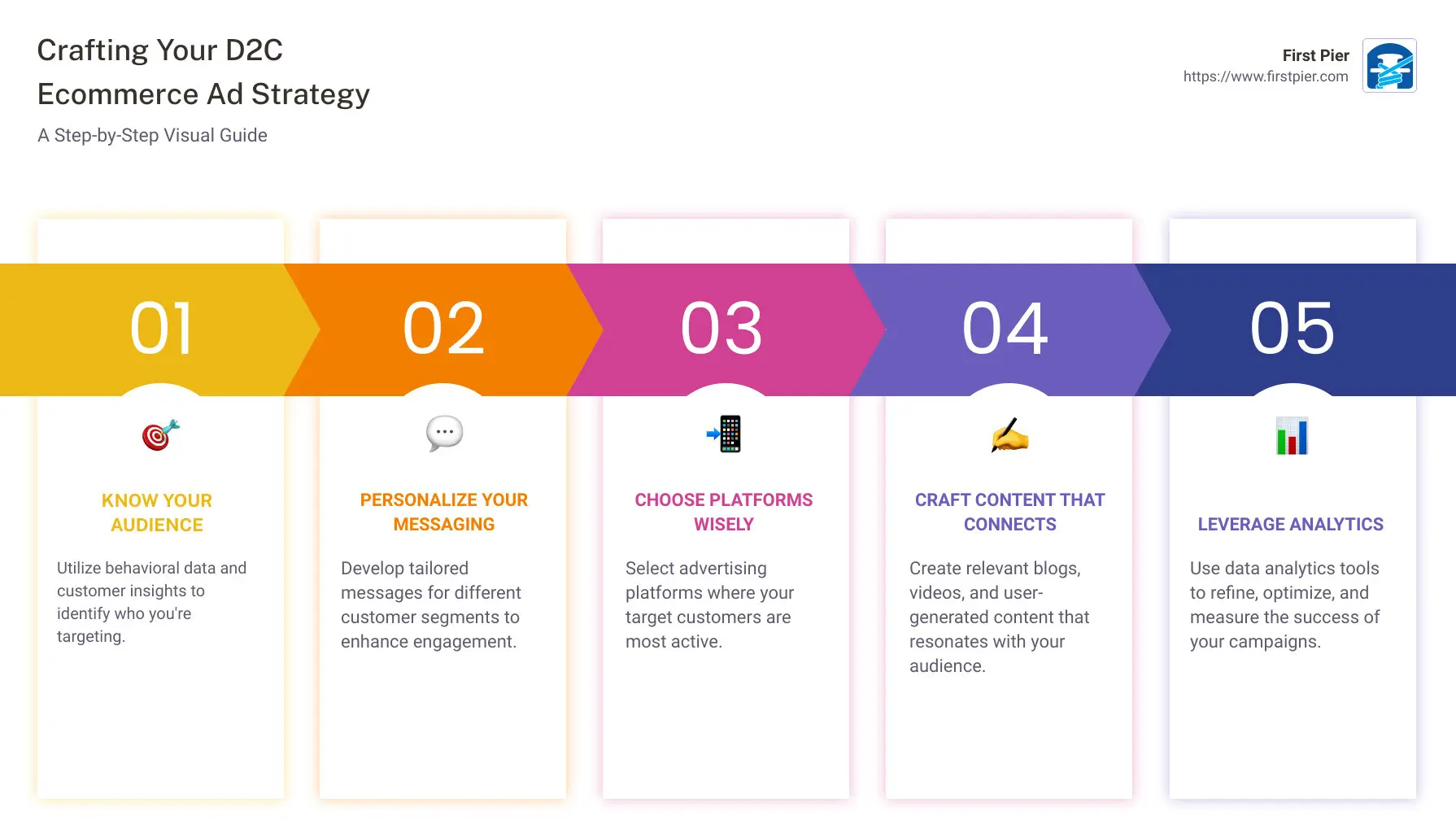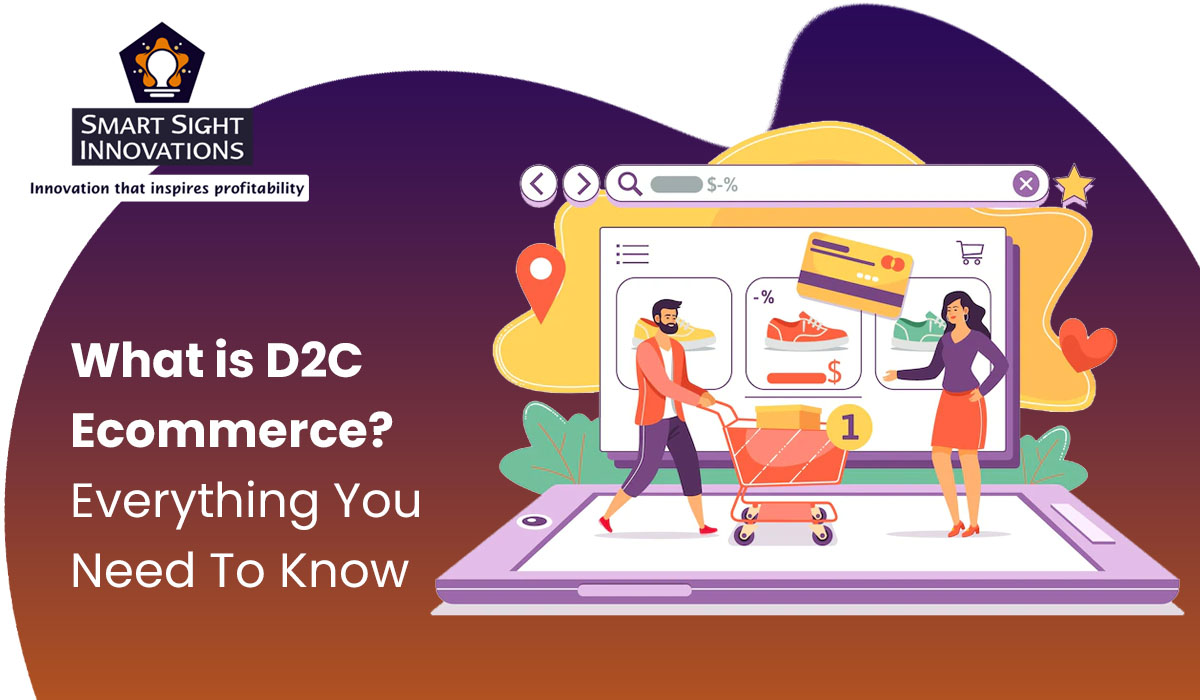Exploring the Prospective of D2C Ecommerce: A Comprehensive Overview for Services
The D2C ecommerce version presents a substantial change in exactly how brand names involve with consumers. It makes it possible for business to bypass traditional retail networks, promoting much deeper connections and possibly enhanced earnings margins. Nonetheless, this method is not without its complexities. Comprehending the nuances of D2C ecommerce is important for brand names intending to thrive. What approaches can they adopt to browse this developing landscape effectively? The answers may redefine their business approaches.
Understanding the D2C Ecommerce Design

Key Advantages of D2C Ecommerce for Brands
The D2C ecommerce model offers brands significant advantages, particularly regarding increased profit margins. By eliminating intermediaries, firms can keep a larger share of sales revenue. Additionally, this straight partnership with clients promotes enhanced brand name commitment, encouraging repeat purchases and lasting involvement.
Boosted Revenue Margins

Improved Brand Loyalty
Building on the economic advantages of D2C ecommerce, enhanced brand commitment becomes another crucial benefit for firms involving straight with customers. By developing a straight connection, brand names can cultivate much deeper relationships with their clients, gaining understandings right into preferences and habits. This direct interaction enables more tailored advertising techniques, which resonate strongly with consumers. In addition, brands have the chance to control their messaging and client experience, reinforcing brand values and building count on. When consumers really feel a personal link, they are more probable to return, promote for the brand, and join area interaction. Eventually, improved brand loyalty not only drives repeat acquisitions but additionally cultivates an enthusiastic consumer base, more strengthening a brand name's position out there.
Obstacles Encountered by D2C Brands
D2C brands run into several significant challenges that can affect their success. Stock monitoring concerns can lead to stock scarcities or excess, complicating procedures and client contentment. In addition, advertising and marketing spending plan restraints typically limit the ability to properly get to and involve target market.
Stock Administration Issues
Effective supply management presents a formidable challenge for several brands operating in the direct-to-consumer (D2C) room. These brands usually come to grips with changing demand, which can lead to overstock or stockouts, inevitably affecting consumer satisfaction and revenue. Furthermore, the lack of advanced stock tracking systems can cause discrepancies in between actual supply levels and reported data, making complex order fulfillment. The varied variety of items D2C brands generally offer additionally complicates stock monitoring, as variations in sizes, colors, and designs require more careful oversight. Moreover, many D2C services might struggle with limited warehousing capabilities, resulting in inefficient use of space and resources. Subsequently, efficient supply administration continues to be a crucial obstacle for D2C brand names going for sustainable growth and functional efficiency.
Advertising Spending Plan Constraints
Navigating marketing budget restrictions is a substantial obstacle for lots of direct-to-consumer (D2C) brands. Limited funds frequently limit these business' capability to buy comprehensive marketing techniques, resulting in lowered visibility in a competitive market. D2C brands regularly grapple with the demand to look at these guys make best use of return on investment (ROI) while targeting particular audiences successfully. This difficulty is intensified by increasing prices in digital marketing and the requirement to allocate funds across numerous networks, consisting of social media, internet search engine, and e-mail advertising. As a result, lots of D2C brands have to innovate cost-effective advertising solutions, leveraging natural development approaches and influencer collaborations. Eventually, successfully maneuvering these spending plan constraints is important for maintaining growth and accomplishing long-lasting earnings in the developing ecommerce landscape.
Strategies for Building a Successful D2C Ecommerce Service
As customers increasingly seek straight links with brand names, developing an effective D2C ecommerce company needs a calculated strategy that focuses on client involvement and count on. One effective method is to produce compelling brand name stories that reverberate with target market, fostering emotional connections. Utilizing social networks platforms can boost presence and help with two-way communication, enabling brand names to involve straight with customers.Moreover, personalized experiences through tailored advertising initiatives can greatly enhance client retention and loyalty. Executing loyalty programs and offering exclusive deals can further incentivize repeat purchases.Streamlining the purchasing procedure is necessary, making sure an user-friendly interface that enhances the buying experience. In addition, transparent interaction pertaining to shipping and returns constructs depend on and motivates consumer confidence.Finally, actively seeking consumer comments and reacting to it shows a dedication to enhancement and consumer complete satisfaction, crucial elements in the affordable D2C landscape.
Leveraging Technology for Boosted Customer Experience
In today's affordable D2C ecommerce landscape, innovation plays a critical role in shaping consumer experiences. Services increasingly utilize innovative devices such as expert system, chatbots, and personalized formulas to boost interactions and simplify the purchasing process. By integrating these technologies, brand names can provide tailored item recommendations based on specific preferences and shopping behaviors, fostering an extra engaging experience.Moreover, responsive internet site designs and mobile applications assure that clients can access solutions perfectly across various tools. Enhanced payment remedies, including electronic purses and one-click checkouts, better try this out streamline purchases, making it easier for consumers to make purchases.Data analytics also makes it possible for organizations to gather insights into client behavior, enabling constant renovation of services and offerings. In general, leveraging innovation not just improves customer complete satisfaction but also cultivates loyalty, inevitably driving long-term success in the D2C ecommerce market.
Marketing Methods to Drive D2C Sales
Just how can brands successfully catch the interest of consumers in a saturated market? To flourish in the direct-to-consumer (D2C) landscape, brands should employ targeted marketing methods. Utilizing social media systems, brand names can engage customers via interactive web content, influencer collaborations, and user-generated posts. Individualized email projects can additionally foster a feeling of connection, providing tailored promotions based upon consumer behavior and preferences.Moreover, storytelling plays an important duty in distinguishing a brand's story, making it unforgettable and relatable. Brand names must invest in search engine optimization (SEARCH ENGINE OPTIMIZATION) to improve visibility, ensuring their products are conveniently visible online. Additionally, leveraging data analytics enables organizations to refine their marketing techniques and comprehend consumer patterns much better. Inevitably, a multi-channel method that integrates creativity with data-driven insights can substantially increase D2C sales, permitting brands to stick out in a crowded market.
Future Trends in D2C Ecommerce
With the quick advancement of innovation and consumer preferences, the future of D2C ecommerce is positioned for considerable transformation. Arising trends indicate a change towards hyper-personalization, where brand names take advantage of information analytics to customize offerings click to read to private customer requirements. This personalization improves consumer experiences, fostering commitment and engagement.Moreover, sustainability is ending up being an essential element, with customers increasingly preferring brand names that prioritize environmentally friendly methods - D2C Ecommerce Agency. Companies are expected to embrace clear supply chains and lasting products to fulfill this demand.The combination of expert system and enhanced reality will in addition revolutionize the shopping experience, allowing customers to imagine products in their environments before purchase. Furthermore, social business is expected to expand, as systems like Instagram and TikTok facilitate seamless buying experiences straight within social media.These patterns jointly signify a dynamic future for D2C ecommerce, emphasizing customer-centric strategies and ingenious modern technologies that redefine customer interactions
Regularly Asked Inquiries
What Industries Benefit Many From D2C Ecommerce?
The present question highlights markets that grow with direct-to-consumer (D2C) ecommerce. Remarkably, fashion, appeal, electronics, and food industries utilize D2C models to boost brand name loyalty, boost client partnerships, and enhance profit margins successfully.
How Do Shipping Costs Impact D2C Prices Methods?
Shipping expenses greatly affect D2C prices strategies. Businesses must balance these expenditures with affordable prices, considering client expectations and profit margins. Reliable monitoring of delivery can improve consumer fulfillment and drive sales in direct-to-consumer models.
What Payment Alternatives Should D2C Services Deal?
D2C businesses should provide diverse settlement alternatives, including credit/debit cards, electronic wallets, and purchase now, pay later solutions. This range improves consumer convenience, boosts conversion rates, and accommodates various customer choices in the on-line buying landscape.
Just How Can D2C Brands Deal With Customer Returns Properly?
D2C brands can manage consumer returns efficiently by executing user-friendly return plans, supplying prepaid delivery tags, and ensuring timely refunds (D2C Ecommerce Agency). Clear communication and structured procedures boost customer fulfillment and urge repeat service
What Lawful Factors To Consider Exist for D2C Ecommerce Procedures?
Lawful considerations for D2C ecommerce procedures include conformity with consumer defense legislations, information privacy guidelines, copyright civil liberties, and taxation demands. Brands need to browse these intricacies to avoid legal pitfalls and guarantee smooth operations. By eliminating intermediaries, D2C brand names can offer affordable prices and cultivate an extra intimate partnership with their customers.The D2C version is characterized by its dependence on electronic systems, making it possible for brand names to use social media, on-line marketplaces, and their very own web sites to involve with customers directly. D2C ecommerce assists in the collection of important consumer data, making it possible for brands to tailor their offerings and advertising and marketing approaches properly, eventually driving sales and increasing margins. Additionally, brand names have the opportunity to manage their messaging and consumer experience, enhancing brand worths and developing count on. As consumers progressively seek straight links with brands, establishing a successful D2C ecommerce service needs a critical strategy that focuses on client involvement and depend on. D2C brands can deal with customer returns properly by implementing easy to use return plans, using prepaid shipping tags, and making sure prompt reimbursements.
Comments on “Top 10 Benefits of Hiring a D2C Ecommerce Agency for Direct Sales Growth”